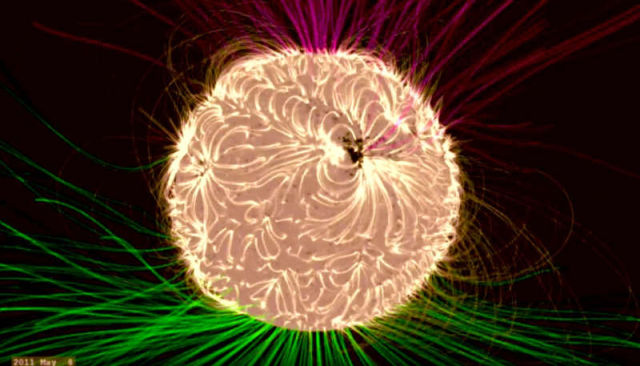Far from the still, whitish-yellow disk it appears to be from the ground, the surface of the sun writhes and dances, towering loops and swirling cyclones that reach into the solar upper atmosphere.
NASA GSFC solar scientist Holly Gilbert explains a computer model of the sun’s magnetic field.
Grasping what drives that magnetic system is crucial for understanding the nature of space throughout the solar system: The sun’s invisible magnetic field is responsible for everything from the solar explosions that cause space weather on Earth – such as auroras – to the interplanetary magnetic field and radiation through which our spacecraft journeying around the solar system must travel.
We can observe the shape of the magnetic fields above the sun’s surface because they guide the motion of that plasma – the loops and towers of material in the corona glow brightly in EUV images. Additionally, the footpoints on the sun’s surface, or photosphere, of these magnetic loops can be more precisely measured using an instrument called a magnetograph, which measures the strength and direction of magnetic fields.
Scientists also turn to models. They combine their observations – measurements of the magnetic field strength and direction on the solar surface – with an understanding of how solar material moves and magnetism to fill in the gaps. Simulations such as the Potential Field Source Surface, or PFSS, model – shown in the accompanying video – can help illustrate exactly how magnetic fields undulate around the sun. Models like PFSS can give us a good idea of what the solar magnetic field looks like in the sun’s corona and even on the sun’s far side.
Read more at nasa.gov






Leave A Comment